Robust, high performing design
to meet your application needs.
Robust, high performing design to meet your application needs
The Whitetip Shark is a fierce but slow-moving shark, notable for its long, rounded fins which feature an iconic white tip. Hydro-Dyne’s family of Whitetip Shark Washing Compactors thoroughly wash and compact screenings to produce the clean, compact white screening plugs they are known for by efficiently returning organics to the channel.
An effective screenings handling system is a critical component to every water or wastewater treatment plant. In wastewater applications screening handling systems are particularly important. The characteristics of wastewater and method for which wastewater gets to a treatment plant varies from location to location.
The team at Hydro-Dyne Engineering works to gather as much information as possible during the design stage to understand if the plant is gravity fed, pumped or a combination to ensure that screenings handling systems are properly designed to meet expectations. Hydro-Dyne’s engineers better understand these factors through discussions with customers, system designers, plant operators and by utilizing our unique Hammerhead Onsite Screen Sizing (H.O.S.S.) system. Our experience has shown that gravity fed plants that have little-to-no pumping tend to be more likely to Washing Compactorrequire greater washing ability. In these cases, the organic material content of the influent does not have the opportunity to be broken down as much on its pathway to the plant and the organic content of the screenings tends to be increased. Because every plant has unique characteristics, Hydro-Dyne is pleased to offer a family of compactors to best suit the needs of a variety of processes in the most efficient and effective way possible.
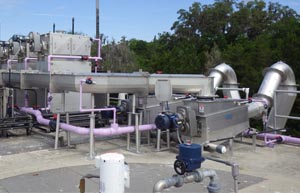
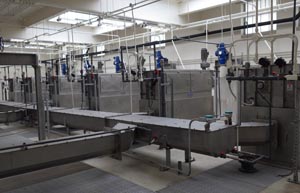
Hydro-Dyne’s family of Whitetip Shark Washing Compactors are custom-designed for individual applications, taking into account the type of flow and solids collected. Multiple models are available to ensure organic material is returned to the treatment plant’s process and inorganic materials are separated, cleaned and dewatered in the most effective and efficient way possible. Stainless steel construction with a hardened alloy auger provides an enduring solution to exceed ever increasing performance and disposal requirements.
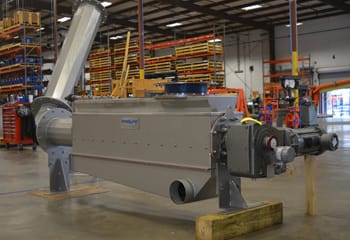
The Whitetip Shark Washing Compactor features screenings drainage and compaction zones. Stainless steel flights and anti-rotation bars improve compaction and provide reliable equipment performance and life.

Drainage/Washing

Compaction
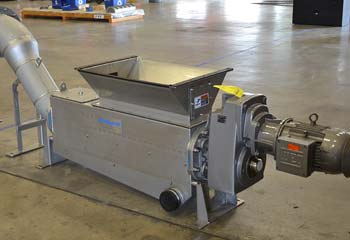
The Whitetip Shark Washing Compactor with Enhanced Dewatering features screenings drainage and rinse/compaction zones. Hardened Alloy screw and AR-400 flights greatly improve compaction and equipment reliability in harsh environments.

Drainage/Washing

Rinse/Dewatering

Compaction
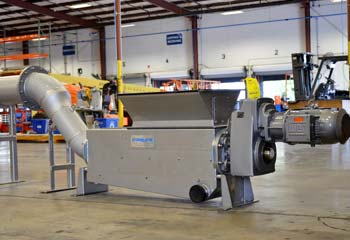
Up to 80% decrease in the total weight of solids output and up to 90% organic removal is achieved by this model with the addition of a washing zone and additional wash cycle. Operation includes a reversing function to the auger and timers so that the screened material is aggressively agitated during a longer wash cycle. Organic material is further broken down and washed back into the system through the drain. Rinse/Dewatering zone thoroughly rinses and compacts captured screenings.

Drainage/Washing

Enhanced/Washing

Rinse/Dewatering

Compaction
The basic operation of a typical washing screw compactor is fairly simple. Material off-loaded from screening equipment is fed into the compactor where an auger moves the material forward as it is washed by rinse bars in the loading area of the unit. From here the material continues to be pushed forward by the auger into the compression zone where screenings are both dewatered and compressed. The dewatered and compressed screenings then enter the pipe that moves it to the waste bin. Screenings that have been washed and compacted reduce the overall volume and disposal costs. Inorganic material is captured and sent to the landfill while organic material is returned to the plant where it is needed for downstream processes.
Do you have any questions or would you like more information?
We’d be happy to hear from you.
4750 118th Avenue North Clearwater, Florida 33762 USA Phone: +1 (813) 818-0777 Fax: (813) 818-0770
Copyright ©2025 Hydro-Dyne Engineering. All Rights Reserved. | Privacy Policy | Terms of Use